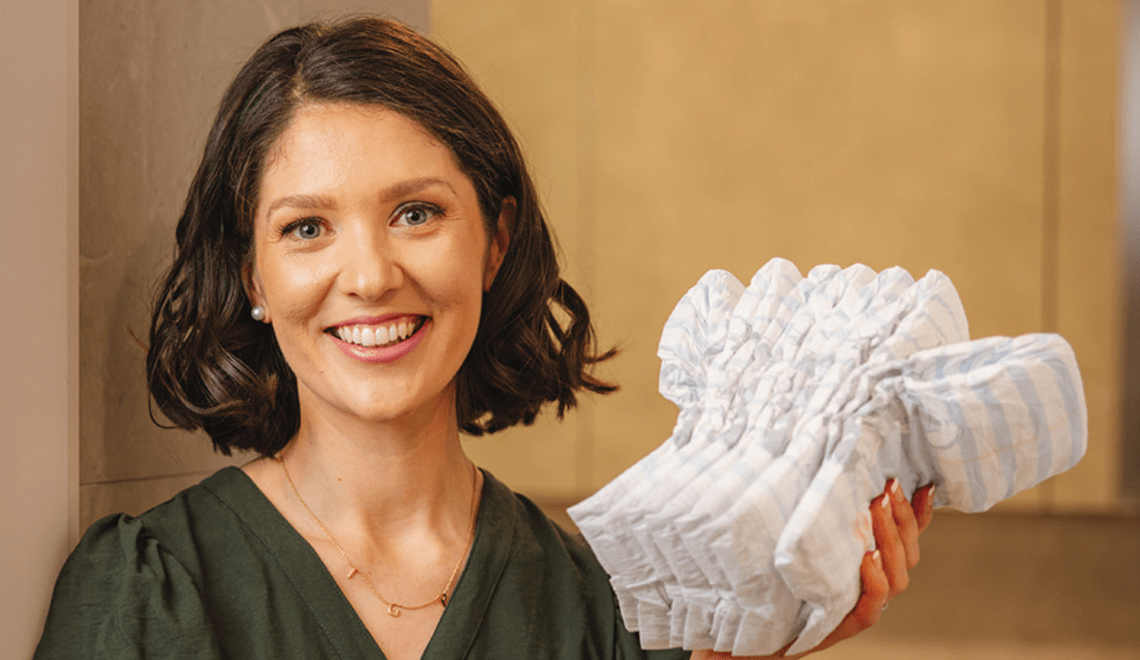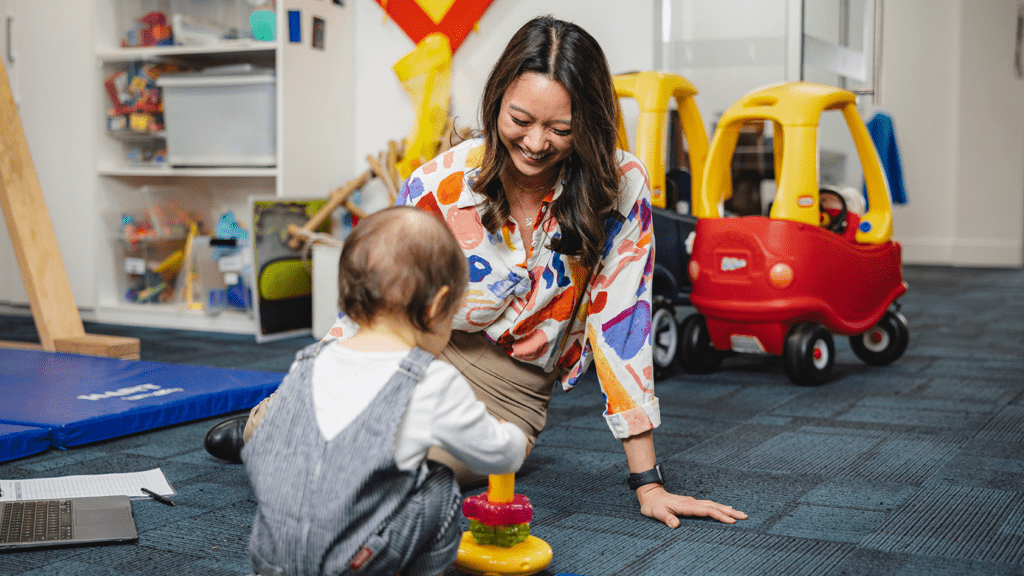
Daytime wee (urinary) and poo (faecal) toilet training is usually achieved by 4 years of age. But how do you know when is the right time or age to start toilet training your child? The answer isn’t one-size-fits-all; rather, it’s a consideration that involves understanding your child’s developmental readiness and resources available.

Toilet training readiness signs
Most children start training between 18 and 24 months of age (Albaramki, et al., 2017). There is no consensus in the research on if there is a best time to toilet or potty train, which or how many readiness signs to use before starting toilet training (Kaerts, et al, 2012). Signs of potty training readiness are generally factors that are related to physical abilities such as the child’s musculature and reflex sphincter control, or cognitive abilities, for example their understanding of toileting-related words, interest in toilet training, verbal and nonverbal indication of a wet nappy (Vermandel et al., 2008). Most children do not master these readiness skills until after 24 months of age but this may vary by as much as a year (Schum, et al., 2002).
Common readiness signs that you might have heard about are:
- Showing an interest in using the potty or toilet
- Staying dry for 2 hours
- Indicating a need to go to the bathroom
Whilst there are some common signs, these are not always necessary and a reason not to delay or commence potty training. Also, despite the provision of typical toileting instruction, not all children acquire the skills necessary to identify the need to wee or poo, obtain access to the toilet, and then use the toilet appropriately, particularly those with developmental disabilities.
At Super Kids, we usually suggest that the most important skills to consider are:
- Have the ability to sit appropriately on the potty or toilet for at least three minutes
- Have a bladder capacity that allows them to hold and remain dry for approximately 1-2 hours between urinations
- Follow instructions and co-operate when asked, such as “sit on the toilet” and “go to bathroom”
- Have minimal interfering problem behaviour (eg: aggression, tantrums)
Therefore “there [is] essentially no data on which readiness skills should guide parents in determining when to begin toilet training.” (Blum, et al, 2003). Instead, you should consider your child’s age, time you have available and any formal or informal supports, such as daycare being willing to support you too.
So what is the best age to toilet train a child?
Should you start at 1-2 years of age?
A variety of studies have found that the earlier toilet training began, the earlier it was completed. However, when toilet training began at an earlier age (such as 18 months), it took significantly longer to complete. Research indicates that commencing toilet training at a very early age (i.e., before 12 months) typically doesn’t significantly affect the age of completion (Largo et al., 1999) and these children will complete toilet training at a similar age to their peers who start at an older age. For example, when children began training between 21 and 24 months of age, it took an average of 14 months to complete training, whereas training that began between 33 and 36 months of age took an average of only about 5 months to complete.
Should you start between 2-4 years of age?
There is evidence that initiating toilet training after 24 months is associated with problems gaining and maintaining bladder control (Joinson et al., 2009). It is also associated with higher likelihood of daytime wetting, delayed acquisition of daytime bladder control, or relapse in daytime wetting when compared with children whose toilet training was initiated between 15 and 24 months (Joinson et al., 2009).

So what’s the answer?
In summary, there is no best time or correct age to begin potty or toilet training. The current research suggests you may choose to begin potty training around 24 months of age, with the expectation that many children achieve success by 36 months and nearly all by 48 months. Gender may also play a role in this as girls achieve nearly all toilet-training skills earlier than boys, including successful completion (Schum, et al, 2002).
If you are still struggling to toilet training your child or you need help teaching them other related bathroom behaviours, such as wiping their bottom or managing their own toilet routine, then you may want to consider a quick consultation with a Super Kids toilet training expert that you can book here or contact info@superkidsconsulting.com for more information.
Renee Collins is the Clinical Director at Super Kids Behavioural Consulting. She is a Certified Behaviour Analyst (CBA) and Board Certified Behaviour Analyst (BCBA) who has over 15 years experience supporting children and their families with toilet training and early intensive behavioural intervention.
References
- Albaramki, J., Allawama, M., & Yousef, A. Toilet Training and Influencing Factors that Affect Initiation and Duration of Training: A Cross Sectional Study. Iran Journal Pediatrics. 2017; 27(3). https://doi.org/10.5812/ijp.9656.
- Schum, T. R., Kolb, T. M., McAuliffe, T. L., Simms, M. D., Underhill, R. L., & Lewis, M. (2002). Sequential acquisition of toilet-training skills: a descriptive study of gender and age differences in normal children. Pediatrics, 109(3), E48. https://doi.org/10.1542/peds.109.3.e48
- Blum, N. J., Taubman, B., & Nemeth, N. (2004). Why is toilet training occurring at older ages? A study of factors associated with later training. The Journal of pediatrics, 145(1), 107–111. https://doi.org/10.1016/j.jpeds.2004.02.022
- Kaerts, N., Van Hal, G., Vermandel, A., & Wyndaele, J. J. (2012). Readiness signs used to define the proper moment to start toilet training: a review of the literature. Neurourology and urodynamics, 31(4), 437–440. https://doi.org/10.1002/nau.21211
- Vermandel, A., Van Kampen, M., Van Gorp, C., & Wyndaele, J. J. (2008). How to toilet train healthy children? A review of the literature. Neurourology and urodynamics, 27(3), 162–166. https://doi.org/10.1002/nau.20490
- Largo, R. H., Molinari, L., Von Siebenthal, K., & Wolfensberger, U. (1999). Development of bladder and bowel control: significance of prematurity, perinatal risk factors, psychomotor development and gender. European journal of pediatrics, 158, 115-122.
- Joinson, C., Heron, J., Von Gontard, A., Butler, U., Emond, A., & Golding, J. (2009). A prospective study of age at initiation of toilet training and subsequent daytime bladder control in school-age children. Journal of developmental and behavioral pediatrics : JDBP, 30(5), 385–393. https://doi.org/10.1097/dbp.0b013e3181ba0e77






